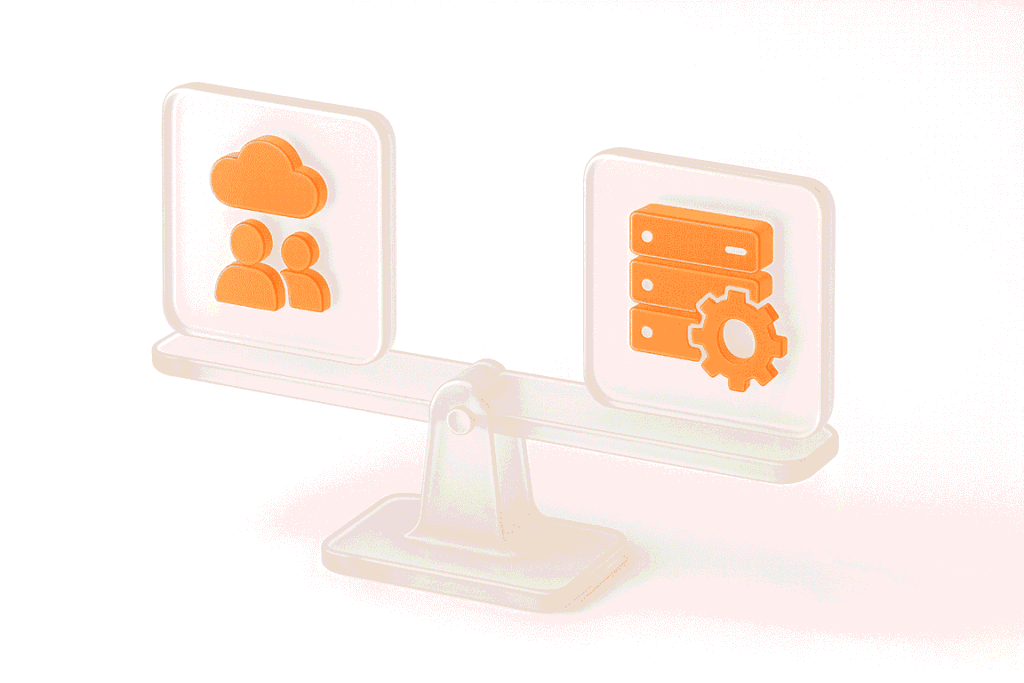Integration vs system testing both focus on the relationship between the modules of the software. It’s common for novice testers and business owners to confuse the two, their objectives, or their role in the SDLC.
The two testing activities are considerably different, although both are highly important for the product’s flawless functionality. In this post, we’ll examine integration and system testing, define their objectives and advantages, compare both testing methods.
Key Takeaways
Integration Testing Definition
Sit testing definition describes integration testing as a subset of software testing that is designed to combine all the modules of a system into a single subsystem and validate their functionality. Typically, it is seen as the following stage after unit testing.
When designing integration test cases, project teams normally have to onboard testers. The QA team will work closely with the development and design departments to help create the best development and maintenance practices.
The Objectives of Integration Testing
The main goal of integration testing is validating if modules and feedbacks can work together in a synchronized way, that there are no errors interface-wise. Another objective of the activity is to validate the system’s compliance with the requirements stated by the service-level agreement.
There are other goals integration testing helps project teams meet:
Advantages of Integration Testing in Software Development
Even if a single module is running like clockwork individually, high-quality system performance is not guaranteed until all the error-free performance of all components is not ensured. If there is an integration defect between subsystems, the entire product will be affected. That’s why missing out on integration testing is a no-go for tech project teams.
The advantages that integration testing offers tech teams are numerous. Here are the most prominent benefits if brings out in projects:
Helps detect bugs early on
Integration testing is one of the first stages of the software development life cycle. Thanks to its broad coverage, it manages to examine the entire system as a sum of its components much more efficiently than unit testing that only focuses on the individual performance of the application units. Integration testing is essential for detecting module interaction issues as early as possible and laying the groundwork for future activities — validation, system testing, and others.
Can be conducted as soon as relevant modules are available
A QA team can start integration testing as soon as there’s a complete integration. That’s why, similarly to unit testing, the activity can be performed continuously throughout the entire development cycle, bringing in feedback that will help developers as they work on new, more complicated subsystems.
Provides a systematic approach for assembling software systems
Integration testing logs help establish the best development practices teams can follow when working on future projects.
A wide range of approaches and techniques
Integration testing is flexible — there are multiple ways to approach it. Depending on the way teams prioritize development tasks, testers can choose a top-bottom, bottom-up, big bang, or a different way to approach integration testing. It’s easy to run sessions without having to compromise the productivity of developers or designers.
Helps uncover interfacing errors
Integration testing validates the way components communicate with APIs, third-party elements, and interfaces. Since the activity requires tight collaboration between testers, designers, and developers, it helps create better views and includes checking if the interface corresponds well to developers’ logic.
System Testing Definition
System testing is normally conducted after the QA team has fully completed integration testing. The difference between system testing and system integration testing lies in the fact that the first targets the relationships within the assemblages, the main aim of running system testing is to conduct a large-scale checkup of the app’s user experience in the production conditions.
System testing is typically compliant with system requirement specifications (SRS). These tests assess both the design and the build’s functionality, taking both functional and performance expectations into account.
The Objectives of System Testing
System testing is a software development life cycle stage that analyzes the system as a whole and checks its correspondence to business and functional standards. It gives testers a possibility to see how the app operates under conditions that are close to the actual production environment.
Here are the chief aims of system testing:
Advantages of System Testing in Software Development
Unlike unit testing, which is conducted from a developer’s point of view, system testing is executed from the end user’s perspective. Although it’s common to associate ST with multi-layered, complex cases, the scenarios testers choose for testing can be relatively straightforward — e-commerce store owners can ensure, for instance, if they can add a menu tab for a new item to the navigation bar.
This versatility and broad scope of system testing are its major, but not only advantages. Here are some other benefits of the activity:
Difference Between System Testing and Integration Testing
Although system vs integration testing are similar processes that, at times, require similar skills and use shared tools, you shouldn’t think that these are interchangeable definitions. There’s a clear difference between integration and system testing that’s presented in the table below:
System Testing | Integration testing |
Fully analyzes the system | Is focused on the integrations within a given assemblage |
Is the third step in the SDLC | Is the second step of SDLC |
Testing black-box practices are used more commonly | White-box techniques are mainly used |
There are more than one testing type | Does not branch out by different testing subsets as much as it does by approaches |
Requires a high level of familiarity of the system’s structure | Requires a general command of the development logic |
Test cases are built to emulate real-world conditions | The environment is designed to simulate interactions between modules |
Summary
Integration and system testing are crucial for a successful software product release. The former is needed to check that each subsystem functions properly while sit definition is in the assessment of the entire software system, its functionality, usability, and performance.
Both system testing vs system integration testing require a professional team. To be confident in the functionality of your project and know that it’s fully assessed and validated, contact PFLB — a leading software testing agency. Our testers will run fast and efficient integration and performance tests using the best industry practices and high-level tools — Jira, Selenium, and others.
Take a look at our portfolio to see the projects our specialists worked on. Contact us to discuss your project in detail — we will be happy to consult your team.



